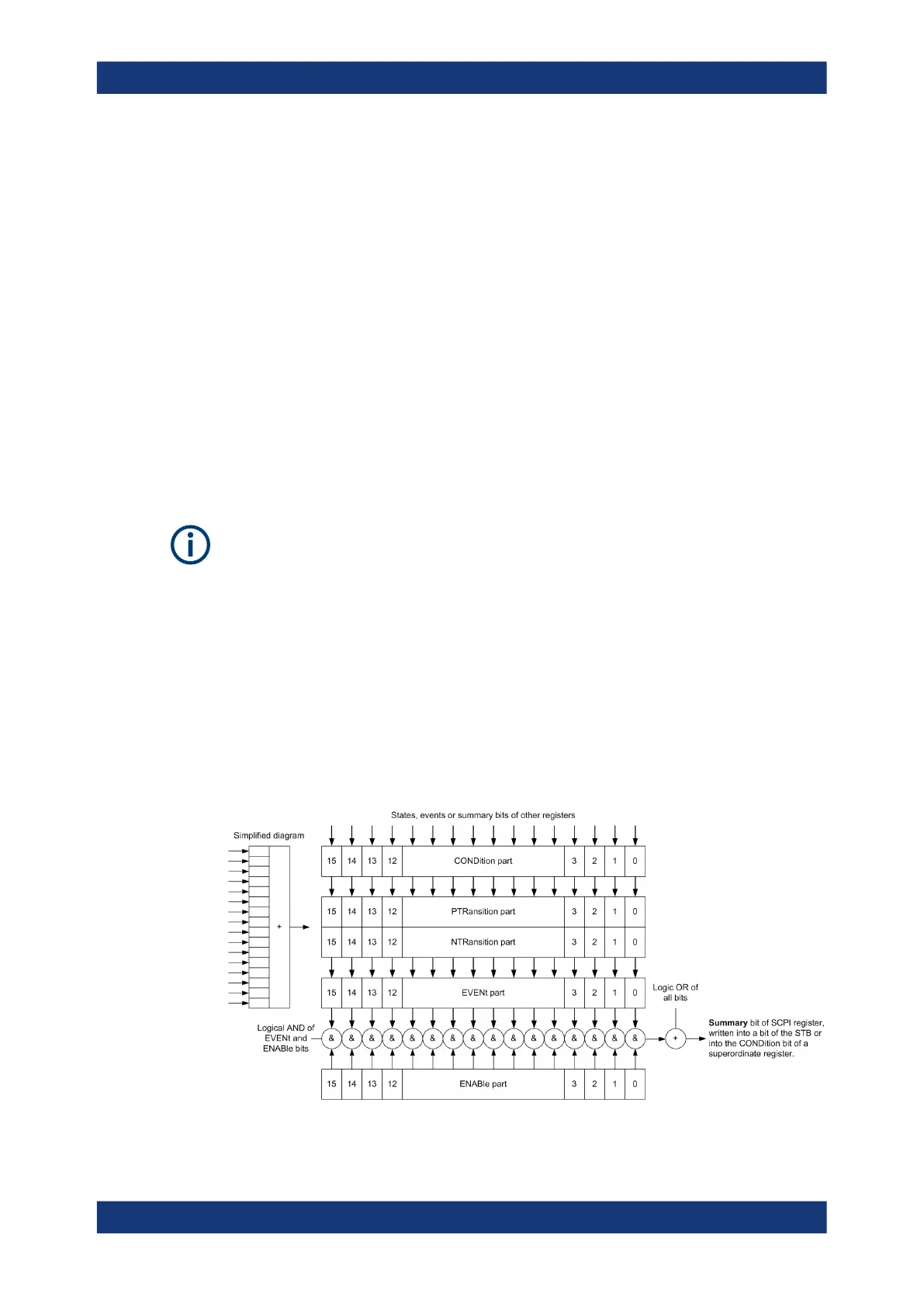Network operation and remote control
R&S
®
SMA100B
390User Manual 1178.3834.02 ─ 09
●
Standard Event Status, i.e. the Event status Register (ESR) and the Event Status
Enable (ESE), see Chapter 13.4.4, "Event status register (ESR) and event status
enable register (ESE)", on page 393.
●
Questionable Status and Operation Status, the (SCPI status registers, see
Chapter 13.4.2, "Structure of a SCPI status register", on page 390, Chapter 13.4.5,
"Questionable status register (STATus:QUEStionable)", on page 393 and Chap-
ter 13.4.6, "Operation status register (STATus:OPERation)", on page 394.
●
Output-Queue
The output queue contains the messages the instrument returns to the controller. It
is not part of the status reporting system but determines the value of the MAV bit in
the STB and thus is represented in the overview.
●
Error- /Event-Queue
The error-/event-queue contains all errors and events that have occurred in the
past. When reading the queue, the instrument starts with the first occurred error/
event.
All status registers have the same internal structure.
SRE, ESE
The service request enable register SRE can be used as ENABle part of the STB if the
STB is structured according to SCPI. By analogy, the ESE can be used as the ENABle
part of the ESR.
13.4.2 Structure of a SCPI status register
Each SCPI status register consists of five parts. Each part has a width of 16 bits and
has different functions. The individual bits are independent of each other, i.e. each
hardware status is assigned a bit number, which is valid for all five parts. Bit 15 (the
most significant bit) is set to zero for all parts. Thus, the contents of the register parts
can be processed by the controller as positive integers.
Figure 13-7: The status-register model
Status reporting system

